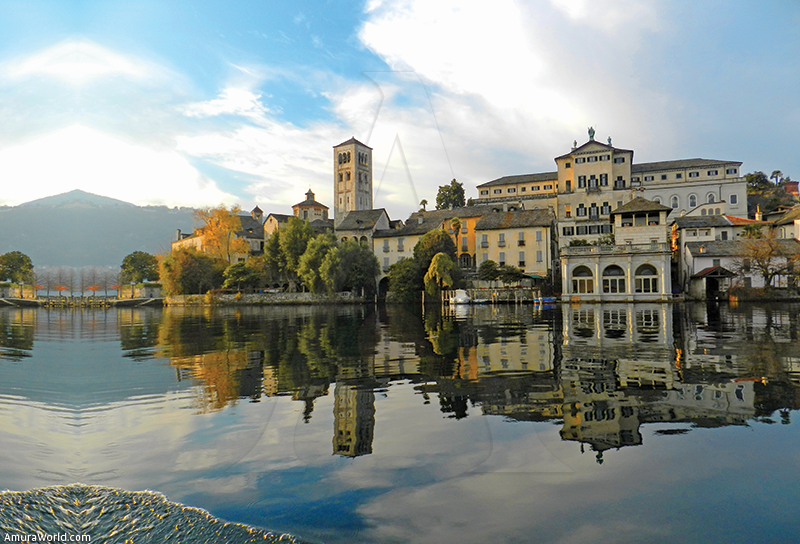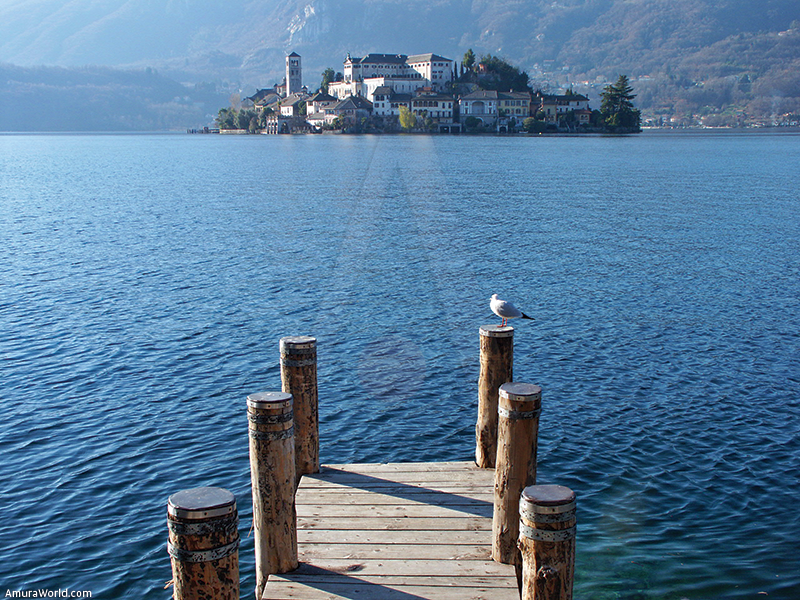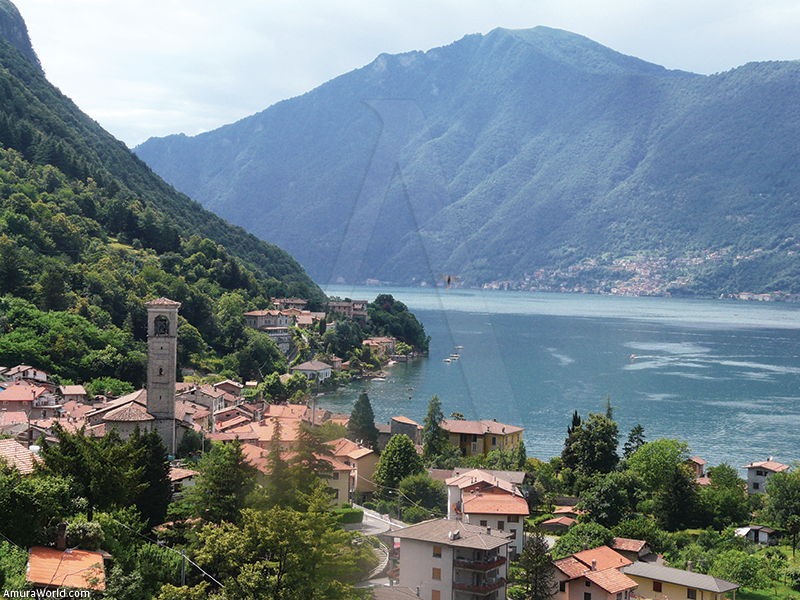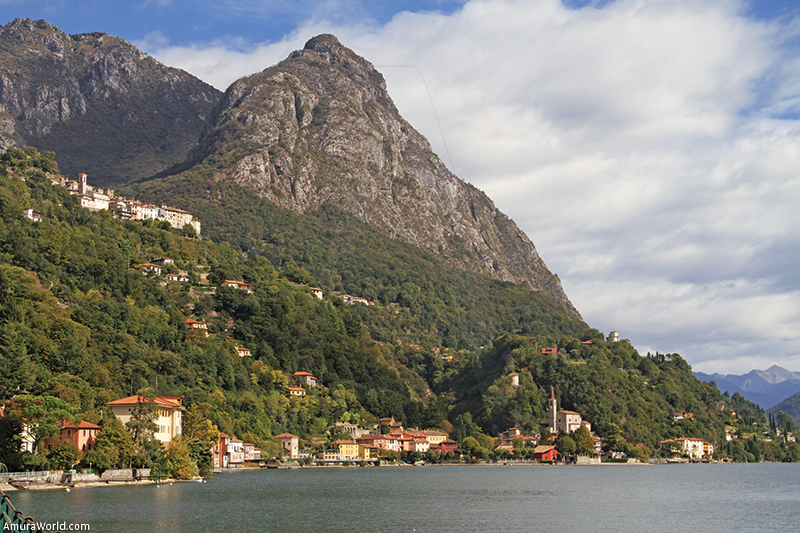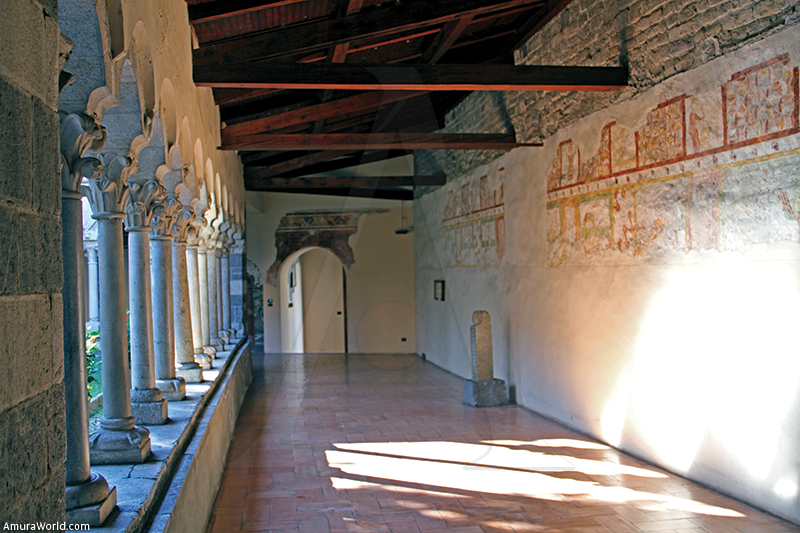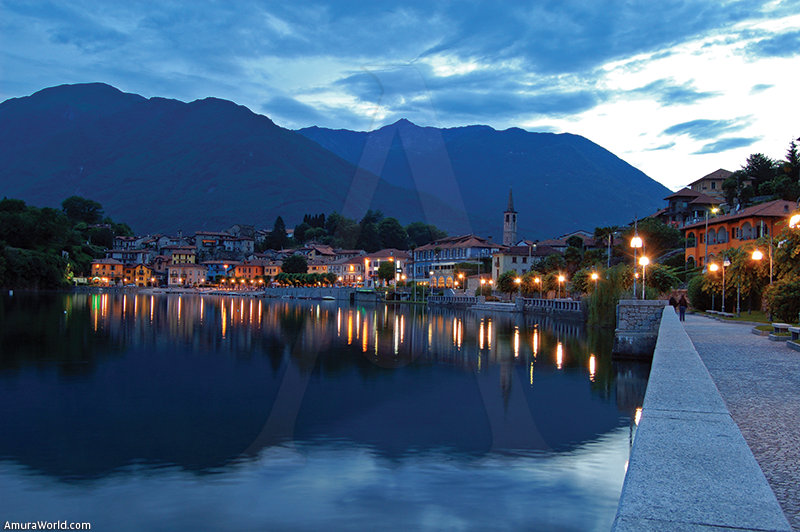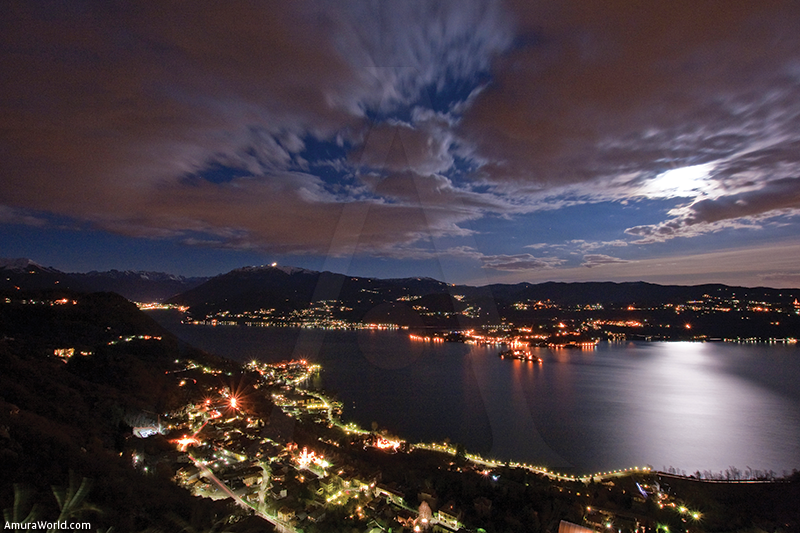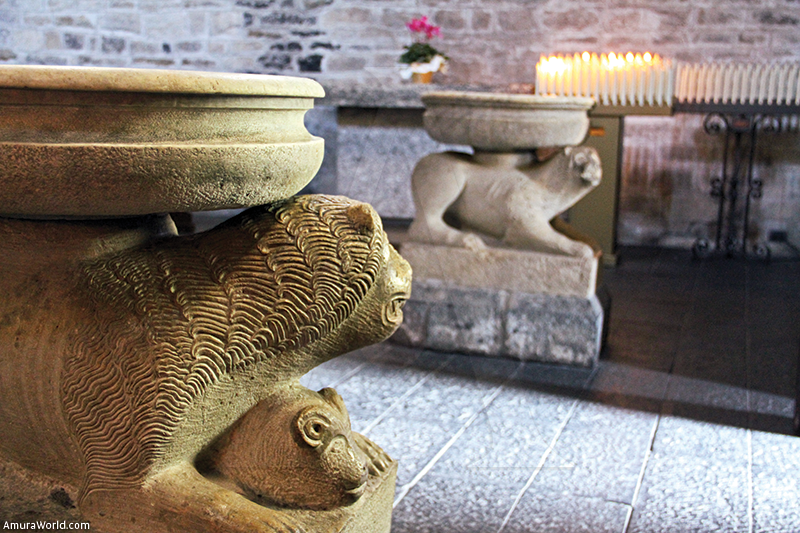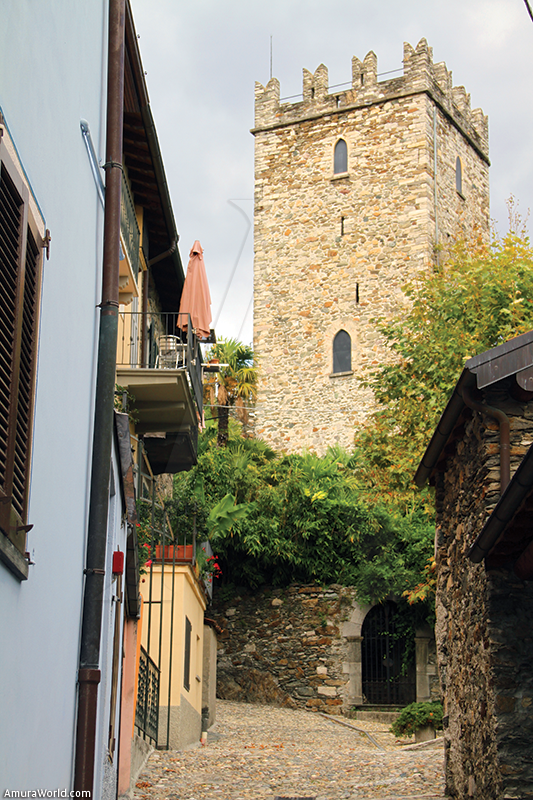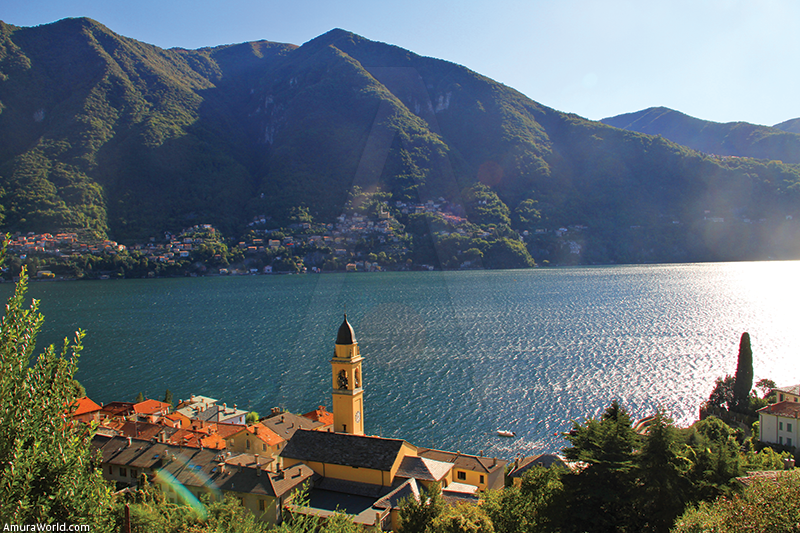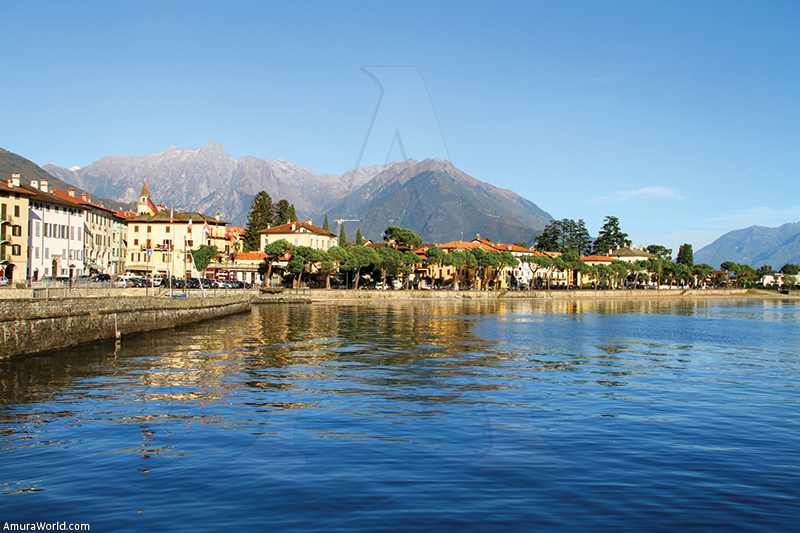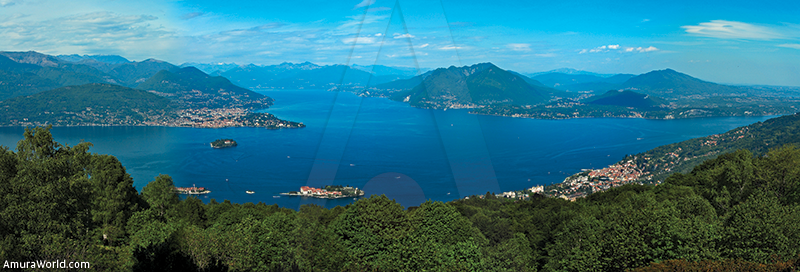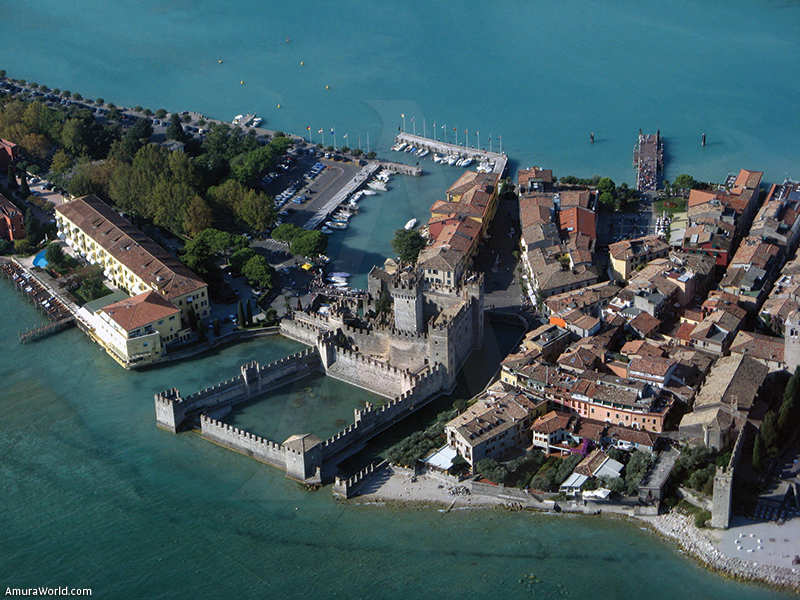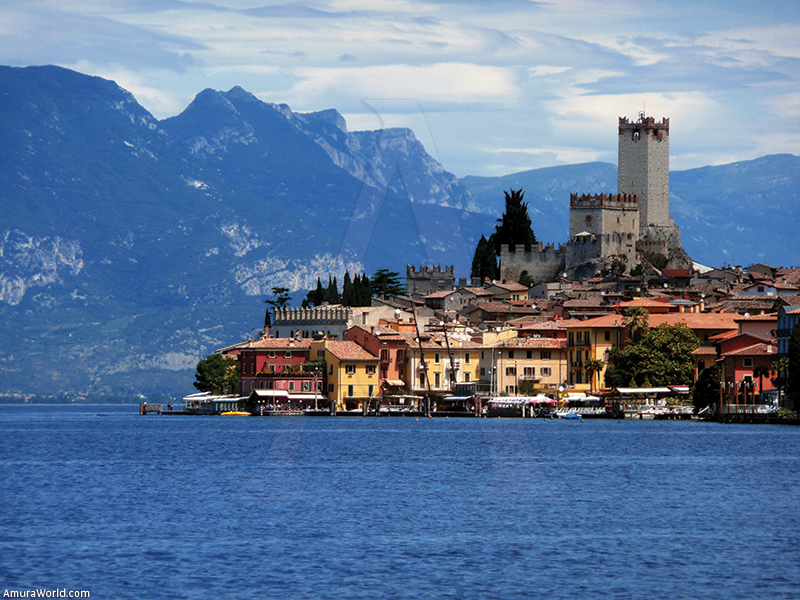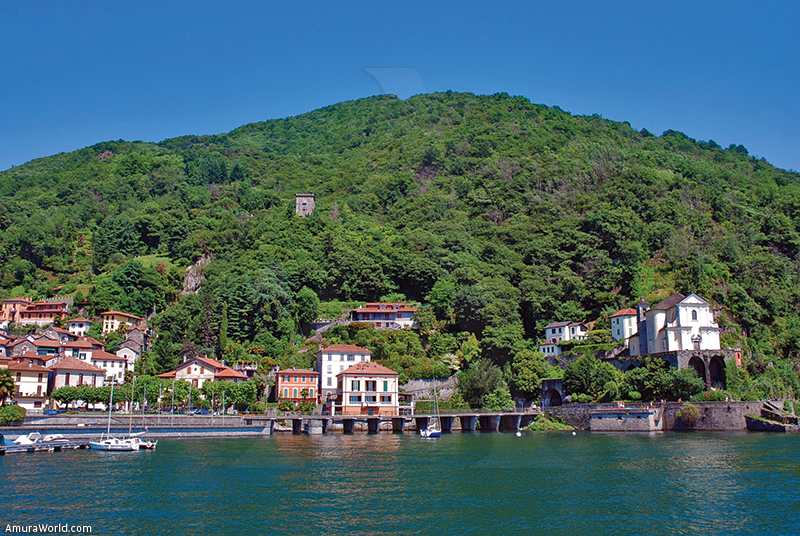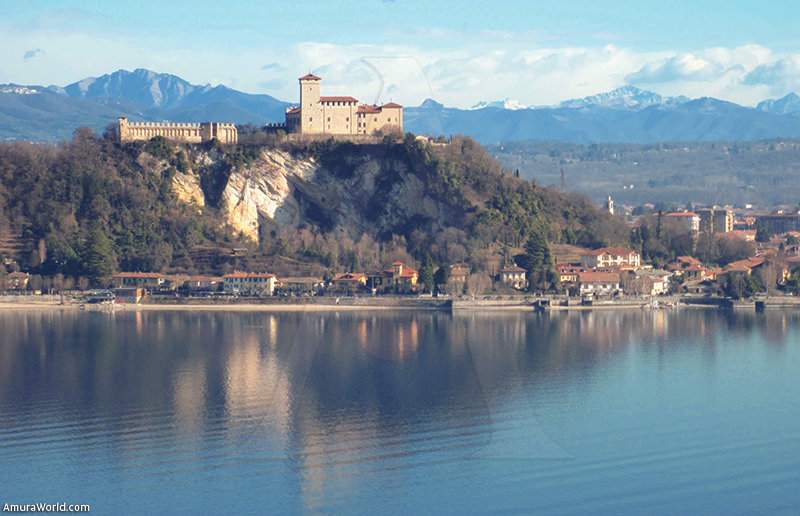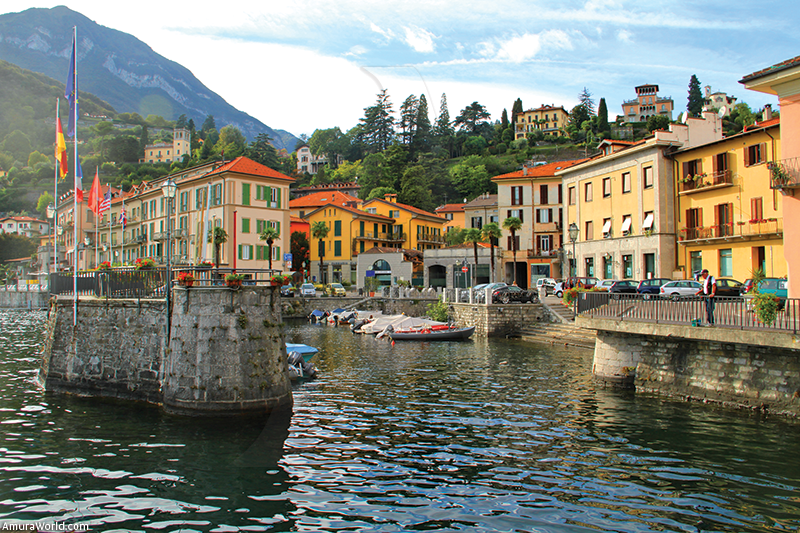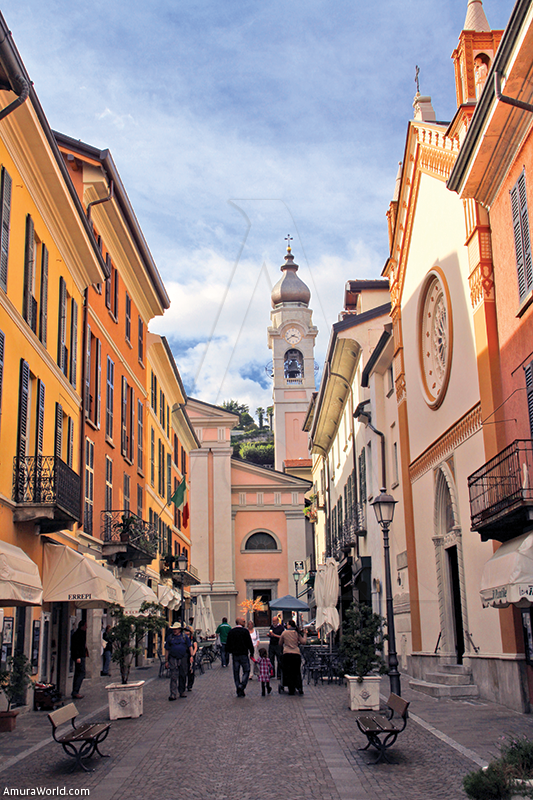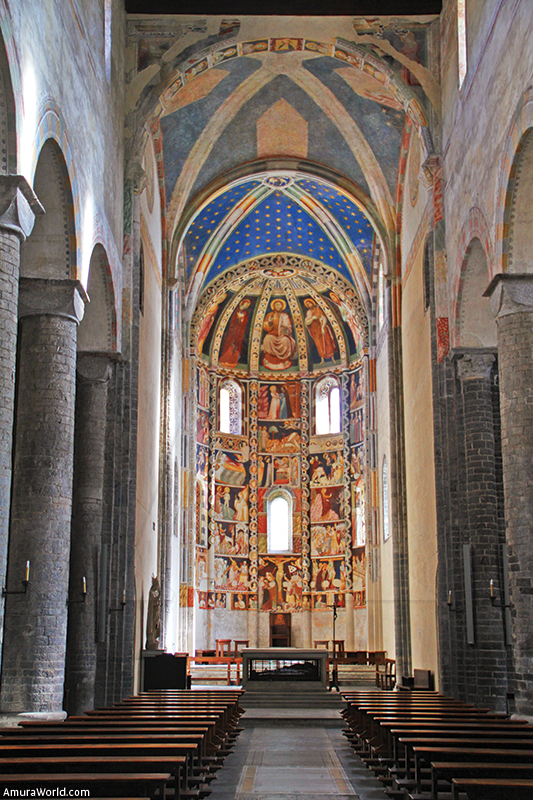Mirror of the Alps
At the bottom of the Alps are the Italian lakes. Guarded by two emblematic cultures, the Swiss and the Italian, they offer the best of both of them. To wonder about the greatness of the world is to find yourself at the Italian lakes. The magnificent views transport you to an enchanted fairytale that will spoil you with the best of the European cuisine, magnificent water trips in complete calm and relaxation. But it also offers you the friendliness of its people, surrounded by the bluest of the skies that frame the mountains on their lake reflections.
The oldest of the history mixes with the newest of the trends. Medieval streets offer the most exclusive boutiques, restaurants and galleries, to welcome you to the greatest of the sensations.
Lago di Como, Lago Maggiore, Lago di Garda and Lago di Lugano
If many of the romantic novels of the late nineteenth century chose as the setting for his plays the lakes of northern Italy, was for one simple reason: since then are magnificent panoramas where the rugged peaks of the Alps pierce the blue sky, or storms threaten the calm black water, where the mountains plunge into the lake in which are reflected, and snow paints the slopes without cluttering the palms and camellias adorning the edges. The elegant villas look in the mirror of the indigo lake, while the people raise their towers on their houses falling in cascades to small ports. These lakes are a show where the Romanesque soul rumbles and cries his heart out; the people are the bottom of the intrigues which fill the veins of the glittering villas. Their names are the sweet music that accompanies its ancient history and make you dream. This had been invented that trip, reading the novels of Stendhal, and The Charterhouse of Parma, or Lamartine’s poem Le Lac, knowing that Goethe lived in Lago di Garda, living the fable of “The Betrothed” by Alessandro Manzoni, was so we decided to explore the majestic scenes of Lago di Lugano, Lago di Como, Lago di Garda and completed with the Lago Maggiore.
Lago di Lugano
We came from Zurich, and the first thing we found was that magnificent lake nestled between high mountains, animated by the Swiss city of Lugano, where Italian is the language and Italian is the life. At the bottom of a large bay on the widest part of the lake, Lugano is the elegant capital of the Swiss canton of Ticino, situated on the plain where the Cassarate river becomes a lake surrounded by mountains of over 900 meters high. The aristocratic buildings adorn the banks of the lake with stunning sea and boats. There we visited the Cathedral of San Lorenzo, the church of Santa Maria degli Angioli, dating from the sixteenth century, and discover the fresco of the Passion of Christ by Bernardino Luini, the church of San Rocco, the Palazzo Civico in the Piazza Della Riforma, the Cinema Corso, Palazzo Riva and the Villa Favorita. The Villa Heleneum is a typical example of the mansions on the shore of the lake and is the Museo delle Culture. Lugano is a city of refined luxury and leisure, where life is a perpetual air of holiday lighting by the southern lights.
The lake of glacial origin, covers an area of 48.7 km2, with 63% of its land in Switzerland and 37% in Italy and is divided into two by a natural dam formed named the Melide, formedby a glacial moraine. It has a width of 1 km on average and offers calm waters for sailing, it is protected by the mountains that do not let the winds of the south and only the air inflates the sails, softly .
Passing Lugano, follow the north coast adorned by beautiful villas and crossing the border, we entered Italy to discover the charming villages of Oria, San Mamete, Cressogno and Porlezza, located in the eastern gulf of the lake, which vibrate that beautiful shore, with restaurants and their music. We could feel the heat of the south, pasta, pizza and risotto were announced, the scenery was beautiful. In Porlezza a visit to the remains of its medieval walls, the church of San Vittore il Moro with its baroque altar, the Romanesque church of San Michele of the twelfth century, and Cressogno to discover the sanctuary of Our Lady della Caravina with its frescoes of the seventeenth century. We climbed the hillside to reach the town of Cardano which opened before us a superb view over the Lago di Como, with its steep mountains that enclose the dark blue water.
The winding road down to the lake, between gardens and beautiful villas, all the way to Managgio.
Lago di Como
Menaggio, the most important commercial center of Alto Lario, was our gateway to Lago di Como, the most beautiful of all. We visited the town where the terraces of the cafes and ice cream parlors were filled with people basking in the bright autumn, among medieval streets we took a walk into the past, and the small harbor protected the boats againts the bad weather . We visited the church of Santo Stefano which its baroque architecture hides its Romanesque origins, and the church of San Carlos, dating from the seventeenth-century, with its painting of Vermiglio. Lake side we discover the elegant porticoed villas, Grand Hotel and villa-Vigoni Milyus neoclassical style.
A bit north, we found, forgotten by tourists, the charming village of San Siro, whose church stands on the shore of the lake, as it has for centuries. San Siro sleeps at the foot of the castle, with its steep streets leading down to the lake, passing under the houses, an exquisite town where there are no restaurants and only the old men walk down the stairs or at the dock.
The lake sparkled in the autumn sun, horizontal, emerged from the south and the light dazzled as the magic of the surroundings. We returned to the south to pass through the lake and discover the Villa Carlotta in Tremezzo, with its elegant terraced gardens. Built by the Marquis Gorgio Clerici in 1745, finally Princess Marianne of Prussia gave it to her daughter Charlotte as a wedding gift. The fountains were singing in their terraced gardens displaying camellias, palms, azaleas, lemons, and exotic flowers. The views from the elegant rooms were spectacular, we could admire much of the lake and the towns that glowed in the afternoon light at the foot of the Grigne mountains. The town of Bellagio sparkled with the golden light that animated him.
Next to the villa, we reached the Grand Hotel Tremezzo, whose architectural style reminds of Villa Carlotta, with its monumental staircase and beautiful gardens. It was built in 1910 and retains the elegance of its setting in its luxurious rooms and antique furniture, the beauty of the end of the Belle Epoque artistically invented to get the crème of the German, English, Austrian and French aristocracies. Here celebrities like Greta Garbo stay in. The view from the room was majestic and covered Punta Balbianello, Bellagio and Grigne mountains, one of the most beautiful views of the lake. From our balcony, we take a glass of champagne while enjoying the landscape, and the last rays of sun lit up that side of the lake. It was a magical moment when the full moon broke the crest of the Grigne mountains and its reflection carssed the surface of the lake to light a magnificent setting. Those were great moments, arising from the past, and I imagined Charlotte of Prussia ride the waves of the most superb lake in Europe. We walked to the edge of the lake to the town center for dinner at a typical restaurant with exquisite pasta, risotto or pizza.
The next day we decided to tour the lake by car, turning it over to visit the most relevant, we headed south past the town of Tremezzo where the Villas La Quiete shine and Carlia (dating from 1676), the church of Santa Maria that houses the Black Madonna and the port, to reach the village of Lenno with the famous Villa del Balbianello (star of the films Casino Royale and Star Wars Episode II), built in the seventeenth century, offers a wonderful portrait with their banana gardens, its columns, and Romanesque architecture. We visited the XI century Romanesque church with frescoes. Comancina island is located directly opposite and we visited the ruins of the churches that have marked its history, the baroque church of San Giacomo where the famous restaurant La Locanda dell’Isola Comancina is. We continue our journey to discover the amazing bell tower of St. Mary Magdalene in Ossuccio, one of the emblems of the lake, which lies at the foot of the Sacro Monte di Ossuccio, dotted with shrines. That church has Romanesque origin, probably the second century AD, it used to be attached to a hospital that housed pilgrims in medieval times. The chapel looks Romanesque architecture but what stands out is its unique steeple. Nearby is Giulino di Mezzegra where Mussolini and his mistress were arrested and executed in 1945.
We went to Sala Comacina, beautiful harbor with its church decorated with frescoes and elegant villa Cesare Beccaria Manzini, where we stayed. We continue to Argegno, a picturesque village crossed by the Telo stream where you can admire the church of Santa Anna and the oratory of San Rocco, that has sublime frescoes. After passing several towns and many tunnels, we reach Cernobbio where we visited the Villa d’Este, an ancient seventeenth century building transformed into a luxury hotel frequented by princes and actors, where the halls and rooms are decorated with period furniture. The village at the foot of Mount Bisbino, invites you to explore its steep streets adorned by elegant shops, cafes and restaurants, its church and Piazza with its port. It’s where George Clooney chose to purchase his Villa.
Finally we reached the city of Como, at the bottom of the gulf, to discover the historic center surrounded by its ancient wall. It was a pleasure to wander through the alleys where life is very Mediterranean feel, to discover its beautiful mansions like Villa Olmo and the Duomo. This impressive cathedral dating from the fourteenth century, was completed in 1740, exhibits a Baroque dome of Filippo Juvara, Gothic façade with superb sculptures, its impressive Porta Della Rana and his nave and the side altars look unique tapestries from the sixteenth century and paintings by Ferrari and Luini. Next to the Duomo we found the Broletto, or the Old Town Hall, dating from the thirteenth century with romanesque-gothic style. This beautiful city was founded by the Romans in 196 BC and its medieval wall was built by Barbarossa. Walking among its streets is to enter a book of history and architecture by visiting their churches, especially San Fedele from the twelfth century, and Sant ‘Abbondio, a jewel of Lombard Romanesque style of the eleventh century.
Leaving Como we continue north along the shore of the lake enjoying a superb view of the people who just go through the other side. Lighted by the autumn sun crossed the peoples of Belvio, Torno, with its churches and especially the magnificent Villa Plinian built in 1573 by Count Anguissola, governor of Como, and where Stendhal, Byron and Rossini stay. The charming villages succeeded one another, each more charming than the other, in that narrow and deep part of the lake, to reach Bellagio, one of the villages and popular resorts in the region, with its steep narrow streets leading to the dock where tourists go to eat, enjoy the view with some ice cream, enjoy the refined atmosphere and visit the elegant shops. Here we ate at Villa Serbelloni, that wonderful place transformed into a magnificent hotel that hosted Churchill and Kennedy, among the most famousguests. The many hotels and restaurants watch the comings and goings of ferries for the Tremezzo, is right across the pier.
We continue our route, from the tip and along the eastern arm of the lake in the middle of a different vegetation, to Lecco that incluyes the places mentioned by Manzoni in his novel The Betrothed. We follow the lake highway north to reach Varenna, one of the best preserved villages of the lake, just to the point where they meet the three arms. Its streets are staggered with walkways, preserving the medieval atmosphere and cherish the beautiful church of San Giorgio (fourteenth century) with its magnificent altarpiece. Also notable are the Villas Cipressi and Monastero. On the slopes of the mountains stands the medieval castle of Vezio, built on a Roman tower, with spectacular views over the lake. We stopped at Bellano breathing its historic atmosphere between narrow streets lined with houses with shields, and finally reached the Abbazia di Fiona, a beautiful Cluniac abbey hidden in a small wooded peninsula, surrounded by the majesty of the high mountains, their enchanted garden offers the best views of the lake and its cloister shows arches with capitals of strange figures and frescoes of the thirteenth century; the church of San Nicolao is decorated with small arches and pillars; and the bell stops ringing his bell as a music invented by the angels on the mountains.
We continue our route to Colico, the Adda river, one of the rivers feeding the Lago di Como, after passing the Lago di Mezzola, and reach the west bank. We stopped at Gravedona to visit Santa Maria del Tiglio (twelfth century), the Romanesque church famous for its stone walls and black and white octagonal belfry. In his nave includes a wooden crucifix of the twelfth century, the mosaic floor of the sixth century and several extra frescoes. The Spanish fort on the outskirts, was built in 1640 to defend the valley of the River Adda. Finally, we return to the Grand Hotel Tremezzo when the sun disappeared behind the mountains, painting gold the banks of Lago di Como. A magic moon arose, rounder, and we went out walking along the lake, breathing the fresh air breeze glided over the waves, while waiting for us and a wonderful dinner at the hotel.
The next day we took a speedboat to cross the lake, enjoy the beautiful views of the towns attached to the mountains, feel the wind coming down from the slopes to slowly envelop the magic of the lake in the winter. The snow could covered mountains but rarely reaches the shores where the palm trees still rise.
Lago di Garda
Going through the roads crossing the green hills of Lombardy, visiting Bergamo, and the small Lago d’Iseo, we arrived to Lago di Garda in Desenzano Garda, a town and summer resort with its small harbor surrounded by beautiful buildings and a long beach. Under Venetian rule in the fifteenth century, dressed in elegant buildings such as the City Hall, the building of Veneto and the Duomo Provveditore that shows Tiepolo’s The Last Supper. In the ruins of the Roman villa watched some beautiful mosaics dating from the fourth century. We took a speedboat that gave us a ride to discover the narrow part of the lake that enters the Alps, adorned by beautiful villages such as Gardone Riviera, Limone sul Garda, Riva del Garda, where cliffs fall into the mountains, and Torri del Benaco. The boat dropped us off at Sirmione, the most fascinating town of Lago di Garda, situated on a peninsula and occupied since Roman times, was converted into a fortress in the thirteenth century and conquered by Venice in 1405. The most fascinating of the village is the Rocca Scaligera, a fortress guarding the entrance to the town, surrounded by a cove it shelters the Veronesse boats, then the Venetian ones, and now serves as a marina. We wandered through the medieval streets clogged with people who discovered the elegant shops and ate the famous ice cream, visited the church of Santa Maria Maggiore (XV century) with its interesting frescoes, and after passing the residential area and the forest, we reach the Grotte di Catullo, a huge estate built between I BC and I AD centuries, where we observed that the town had terraces, arcades and beautiful mosaics. Its location at the tip of the peninsula and its size makes it exceptional, offering a spectacular view over the lake and the shore where the water appears clear. The whole town is a gem enclosed in the Roman villa on one side and the castle on the other, a place of great charm and steeped in history. We went back to sleep in our Grand Hotel Tremezzo where we felt at home, living the lifestyle of a European aristocrat, imagining we were having dinner in the beautiful dining room of our villa overlooking the lake, lit by the moonlight.
Lago Maggiore
It is the largest region with 212 km2 and 372 meters deep, where the Alps emerge from its waters. We decided to visit the south by boat we address in Angera at the foot of the Rocca di Angera, an imposing medieval fortress that now houses the museum of dolls. We note the town of Arona, important for its location at the end of the lake and continue by Lesa, where the church stands over the town crowded in the summer, reaching Belgirate with its arcaded houses, dominated by the Castillo San Visconti di San Vito (twelfth century). In Stresa we observed Sant’Ambrogio and Ducale where the philosopher Rosmini died. In the Isole Bella discover the baroque palace built by the Borromeo family in the seventeenth century with its terraced garden, in which Mussolini met with French and British officers in 1935, and Napoleon stayed in 1797. We passed the entrance to the Gulf of Borromeo to reach Verbania, created by two towns: Pallanza which retains its medieval aspect, and Intra with its baroque and neoclassical atmosphere. Here we visit the church of Santo Stefano, the church of San Leonardo and Dugnani Palazzo which houses the Museo del Paesaggio where we admired beautiful landscape paintings. We also discovered the chapel of the Madonna di Campagna from the sixteenth-century, its Romanesque bell tower and its frescoes. We walk through the botanical gardens of Villa Taranto, one of the most famous in Italy, created by an Englishman named McEacharn in 1913. It is terraced gardens with plants from around the world. We crossed the lake to reach the monastery of Santa Caterina del Sasso Ballaro nested on a rocky ledge, built in the twelfth century by a local merchant to fulfill a promise he made to escape a storm. We follow the shore, watching the houses that adorn it, and reach Laveno, a charming village with its harbor, the only natural harbor on Lago Maggiore where we left the boat. Major port where the Austrians moored their gunboats to monitor the lake is a fascinating town by its business environment, with its alleys and gardens of the Villa Frua.
We continue by road to reach Luino, which is housed in a cove from the time of the Romans, occupied by the Austrians conquered by Garibaldi in 1848. It retains its market and some lovely churches as San Pietro in Campagna with its frescoes and Romanesque bell tower, the oratory of the Chiesa del Carmine which dates from 1477 and the famous chapel of St. Joseph of the seventeenth century.
In Maccagno we took the ferry to discover Cannobio on the other side of the lake. It preserves an ancient atmosphere thanks to its Palazzo della Ragione with its tower of the twelfth century. In the nearby Val Cannobina fascinated us the Orido di Sant’Anna, a small church that prevails in a deep gorge. We also visited two castles at Malpara, dating from the thirteenth and fourteenth centuries, in the islets at the foot of Mount Carza, and belonged to the pirates who plundered the lake. Returning to Maccagno, on our way north to reach Sant’Abbondio, with its neoclassical houses. The lake was a great race out who painted with water colors of the sails. We passed the border into Switzerland, on the other side you could see the great city of Locarno which stretched at the foot of the mountains, in an open valley to the lake. We made our way back to Zurich, passing by many lakes and charming Swiss villages, the famous Gotthard tunnel of 17 km long, and discover the wonderful scenery of the Alps.
We had finished our tour of the Italian lakes, immersed in the romance of the nineteenth century literature, guided by Stendhal and Manzoni, listening to the voices of Maria Callas or Goethe, walking to the beat of meandering lakes winged by the notes of the bell. Our favorite, no doubt, was Lago di Como, the most intimate, mysterious and fascinating. Its towns preserve the medieval atmosphere of fairy tales, its churches rang the bells to wake the ripples of the lake and rolled down the slopes of high mountains. Each of the lakes has its charm, hosts stories of history, invents a tragic love story, and reflects their castles and alleys as a mirror of the past. The European aristocracy continues to visit the lakes, but has changed his nature and travel, but it retains the ambiance of yesteryear with a faster pace. The italian lakes share their banks with Switzerland and operated with the southern atmosphere that moves away from the rigidity shines in the Nordic and southern sun. They are the pearls of the Alps, the gold that shines through the mountains and runs off to the plains that lead to Milan, which is a love story apart, so close to the lakes and so different, so moved as the lakes are peaceful. Lago di Como, Lago di Lugano, Lago Maggiore, Lago di Garda, Lago Iseo, names who sing the flavor of romance and shine among the mountains that drain into the waters, the treasures of northern Italy full of legends, wonders conquer us just by looking at them.
Text: Patrick Monney ± Photo: Patrick Monney

